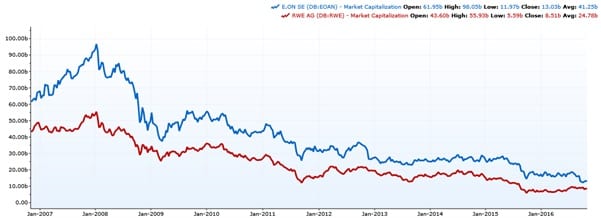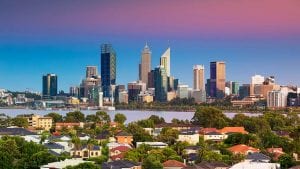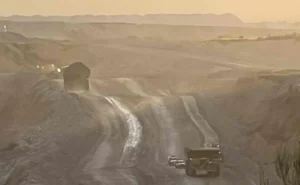Recently there has been a lot of talk about the potential for a new coal fired power station in North Queensland as part of the upcoming election campaign specifically from both the LNP and One Nation.
The LNP have proposed designating a HELE coal fired power station in Collinsville as a prescribed project to limit “any unreasonable delays in the projects approval process”. As reported in the Townsville Bulletin (14/11/17) the LNP have been contacted about building the facility and are considering proposals from Thailand, Japan and China.
Importantly it was also reported that “No government subsidies would be required for the project” which is encouraging as long as they stick to this promise in government.
The purpose of this analysis is to attempt to price what would happen if they didn’t or got coerced as part of a One Nation coalition to fund the project with tax payer’s money.
A mock-up image of a similar HELE plant in Germany has been circulated in a number of newspapers by the Australian Power Project (APP) one of the proponents of the project.
The image (above) was apparently based on one of the latest high efficiency state of the art HELE plants from Germany in Mannheim (Unit 9) which came online in 2015.
These plants would be of the same generation as the proposed NQ plant so the fleet of new plants in Germany represent a good reference for assessing the costs and value of this type of asset.
The other benefit of using Mannheim Unit 9 as a proxy for this project (probably why the APP chose it for their image) is that it fits nicely within the existing transmission infrastructure capacity provided no more renewables are plugged into the same part of the grid. ie an expansion of Ratch’s Collinsville solar project above 42MW.
It is important to highlight some of the uncertainties associated with the analysis of this plant in the Australian market context. An attempt has been made to try to quantify these with arrows as to whether they are a relative positive, negative or neutral for this proposed NQ plant.
- Different Energy Market (Australia Vs Europe) ≈
- Cost of solar power 6 years from now when plant comes online ↓
- German plant used lignite rather than black coal ≈/↑
- Additional potential revenue from district heating ↓
- Capacity part sold for electric railway (100MW) ↓
- Construction/Labour cost (Australia Vs Germany) ≈
To provide some context for the level of capital expenditure required at Mannheim for a HELE plant of this nature below are the specifications for Unit 9.

In order to properly assess the likely future value with an equivalent HELE plant in Germany a full breakdown of revenues from both the electricity production and district heating would need to be undertaken.
It is likely that this district heating revenue stream (not needed by the people of Collinsville let me assure you) would provide some financial flexibility to overcome some of the operational inflexibility (ramp up/down) of running a baseload generator.
Now there is a lot of negative things that I can say about newly built European HELE plants from an asset valuation perspective but it is important to also mention the positives ….. as per the German stereotype it was completed on time.
That is however of little comfort to the new owners of these HELE assets who began constructing them as the price of wind reduced and solar tumbled 90% between 2007 and 2015 effectively stranding their inflexible centralised baseload assets in the eyes of the market.
Below is a chart of what happened to the market capitalisation of both RWE and EON since this asset HELE building took place.

Importantly for Qld taxpayers in the event that they are forced to fund this project even indirectly through a generous power purchase agreement (PPA) the graph above should make them more than a little nervous especially if it is accompanied by other network asset write downs as promised.
It should also be noted that the building and ownership of HELE plants were not the only factors driving this loss of value and that other factors such as early nuclear plant closure, falling cost of renewables, decentralisation of the energy markets and general market sentiment all contribute to the share price.
To attempt to isolate the specific loss of value relating to the HELE plants see Fig 10 below from the recent Macquarie Bank Equities report (Sept 2017) looking at the replacement cost of their new power stations. It is relevant to note that this is a portfolio view of these newly built plants both hard coal and lignite rather than any specific plant.

While it is important to acknowledge the uncertainty as disclosed above using the data available it would be reasonable to expect a loss of between 63-79% which on a plant that costs between 1-1.2 billion AUD could represent a liability of 630m to 950m dollars for Qld taxpayers.
It is easy to be distracted by all the smoke and mirror claims “a vote for the LNP is a vote for lower electricity prices and a vote for the Labor-Greens alliance is a vote for record high power prices”. The benefit of this analysis is that it is based upon the collective wisdom of investors who are putting their money where their mouth is are rather than the spin of politicians trying to get elected.
As long as the LNP stick to their promise of not putting tax payers on the line (including NAIF) for this project I do not lose a wink of sleep that any rational investor will proceed with the project.
Ignoring any issues relating to climate change or the competitive disadvantage of owning such an asset as the energy market increasingly decarbonises, the biggest worry for Qld voters should be that One Nation control the balance of power and insist that tax payers should fund it.
Matthew Grantham is a guest contributor for RenewEconomy.











